Case Study: Exploring Creativity and Entrepreneurial Strategies
VerifiedAdded on 2023/06/07
|5
|845
|91
Case Study
AI Summary
This assignment presents two case studies focusing on entrepreneurial creativity and business ventures. The first case examines Roger McKechnie's entrepreneurial journey, highlighting his creativity in developing and launching tortilla chips, and his ability to identify and cater to overlooked market segments. It analyzes his risk-taking behavior and critical thinking skills as key factors in his success. The second case study explores the concept of nomadic entrepreneurship through the example of 'Preneur,' who transitions from working in large organizations to freelance consulting and eventually starting his own business. It applies Florida's 3-T model (Technology, Talent, Tolerance) to explain the rise of nomadic entrepreneurship and connects Preneur's experiences to Handy's 'elephant and flea' metaphor, illustrating the shift from traditional employment to more flexible and independent work arrangements. This document is available on Desklib, a platform offering a variety of study tools and resources for students.
1 out of 5
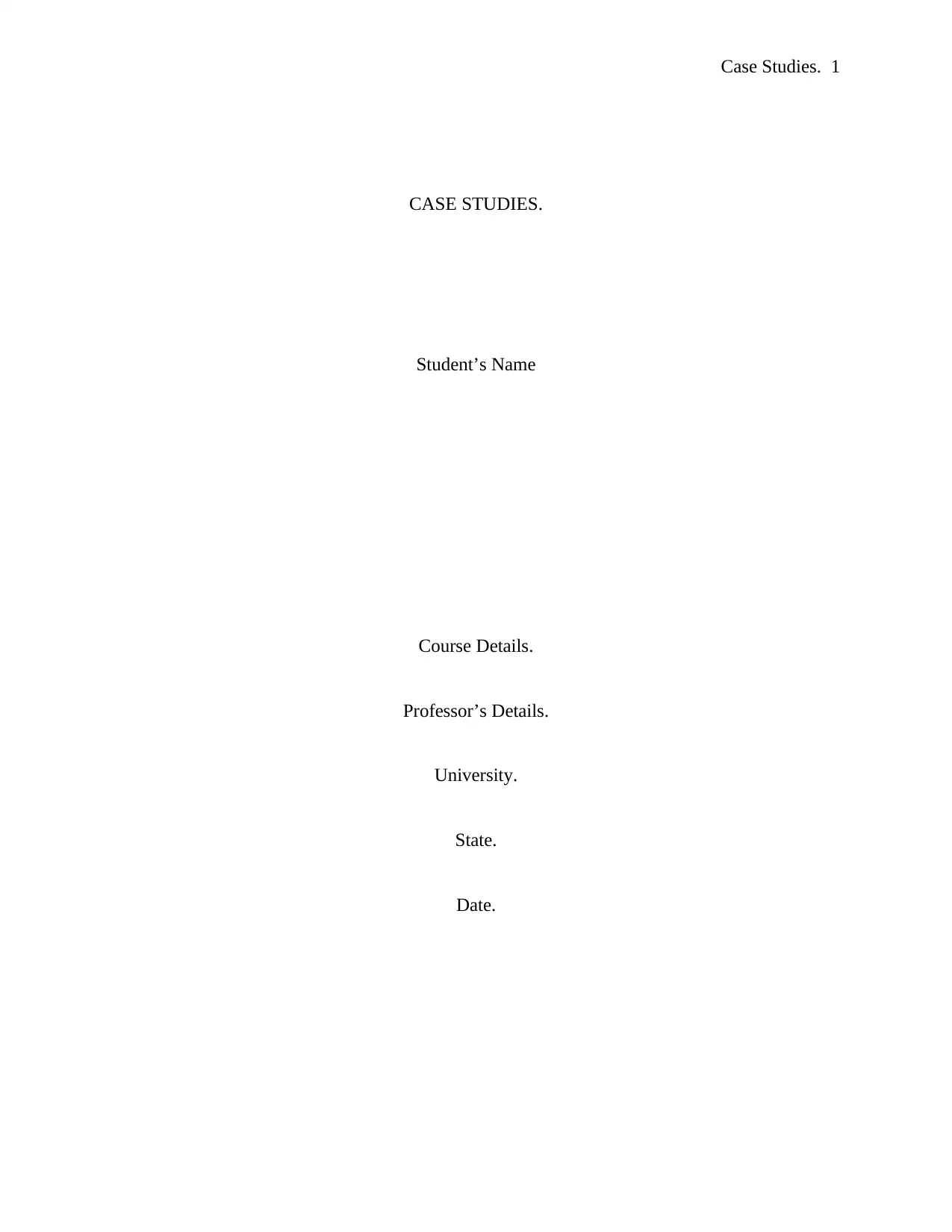
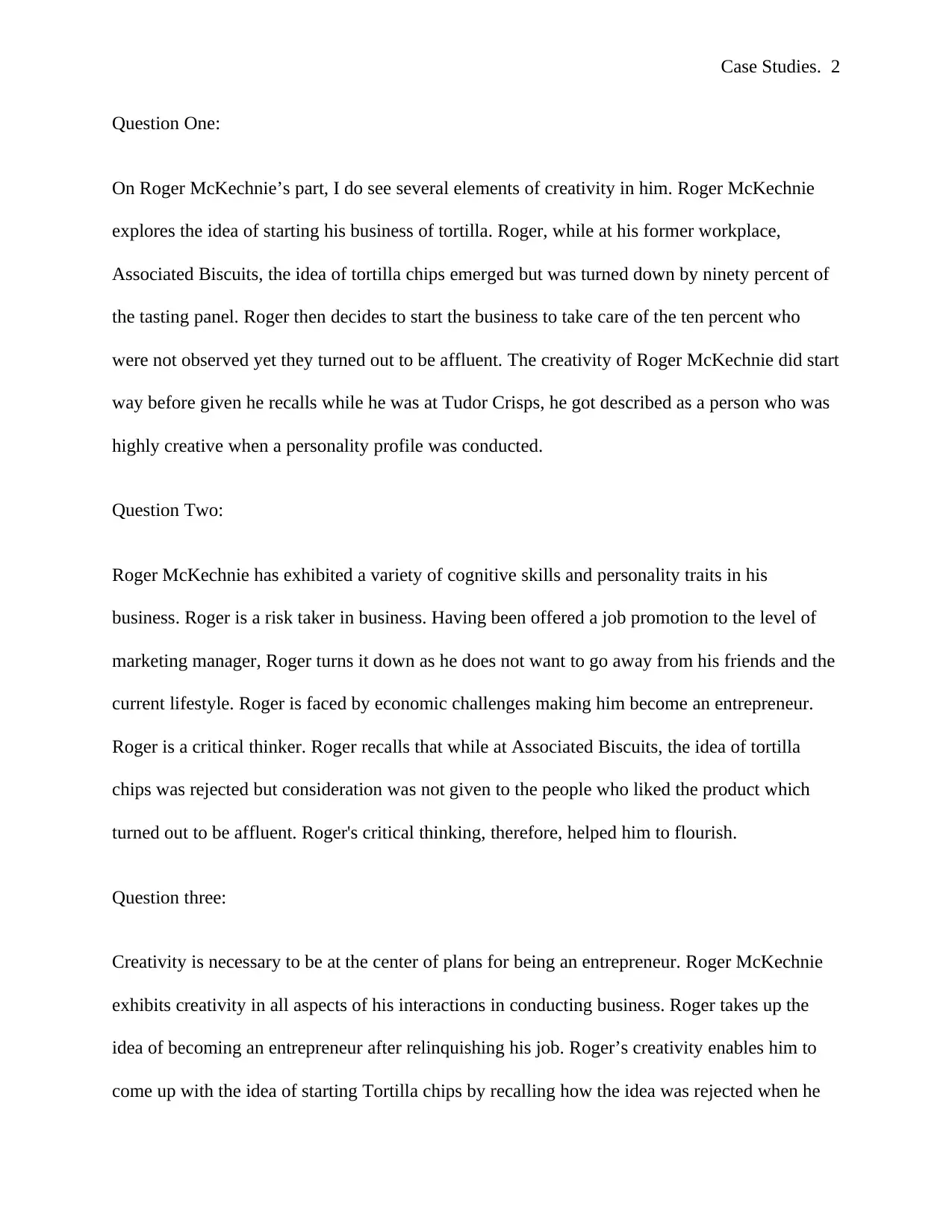
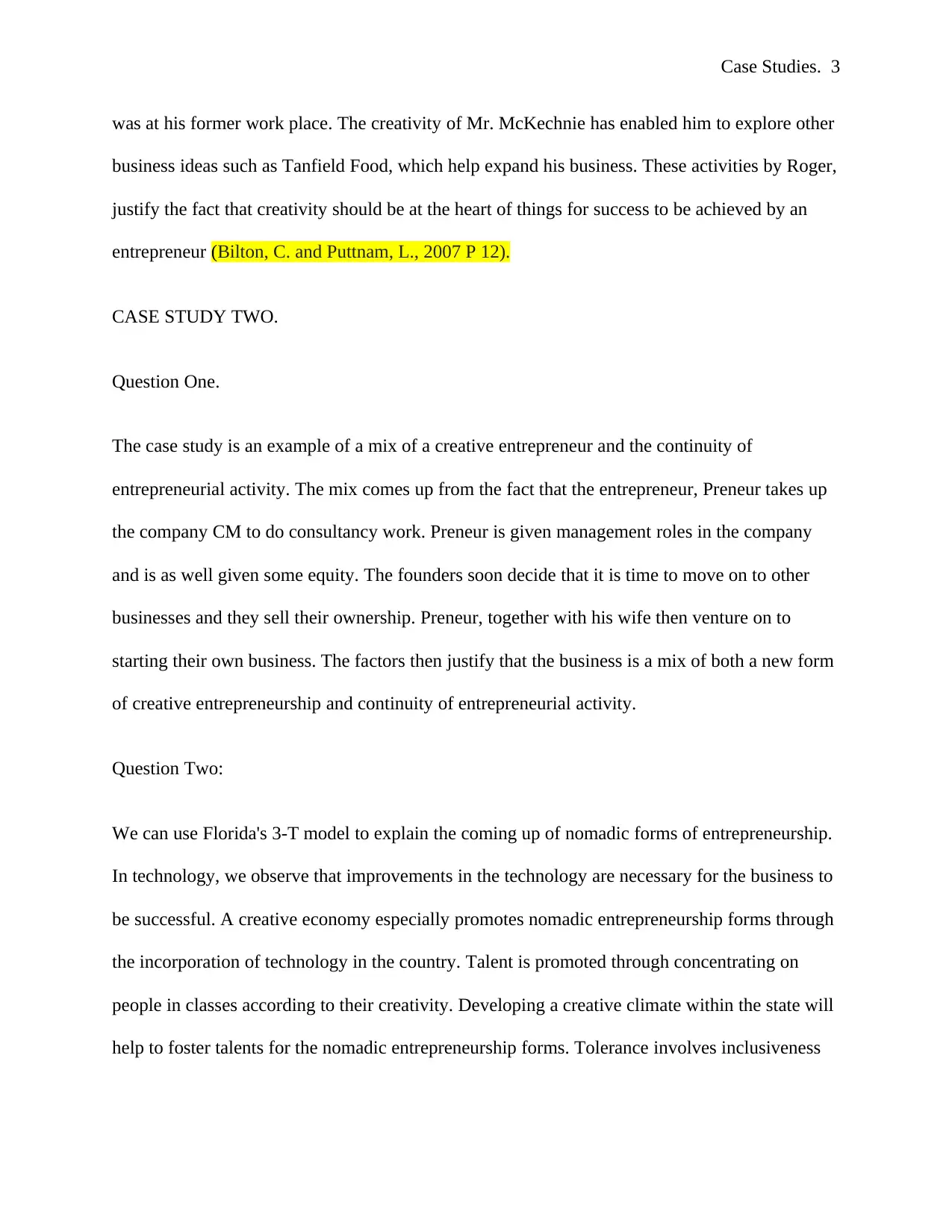

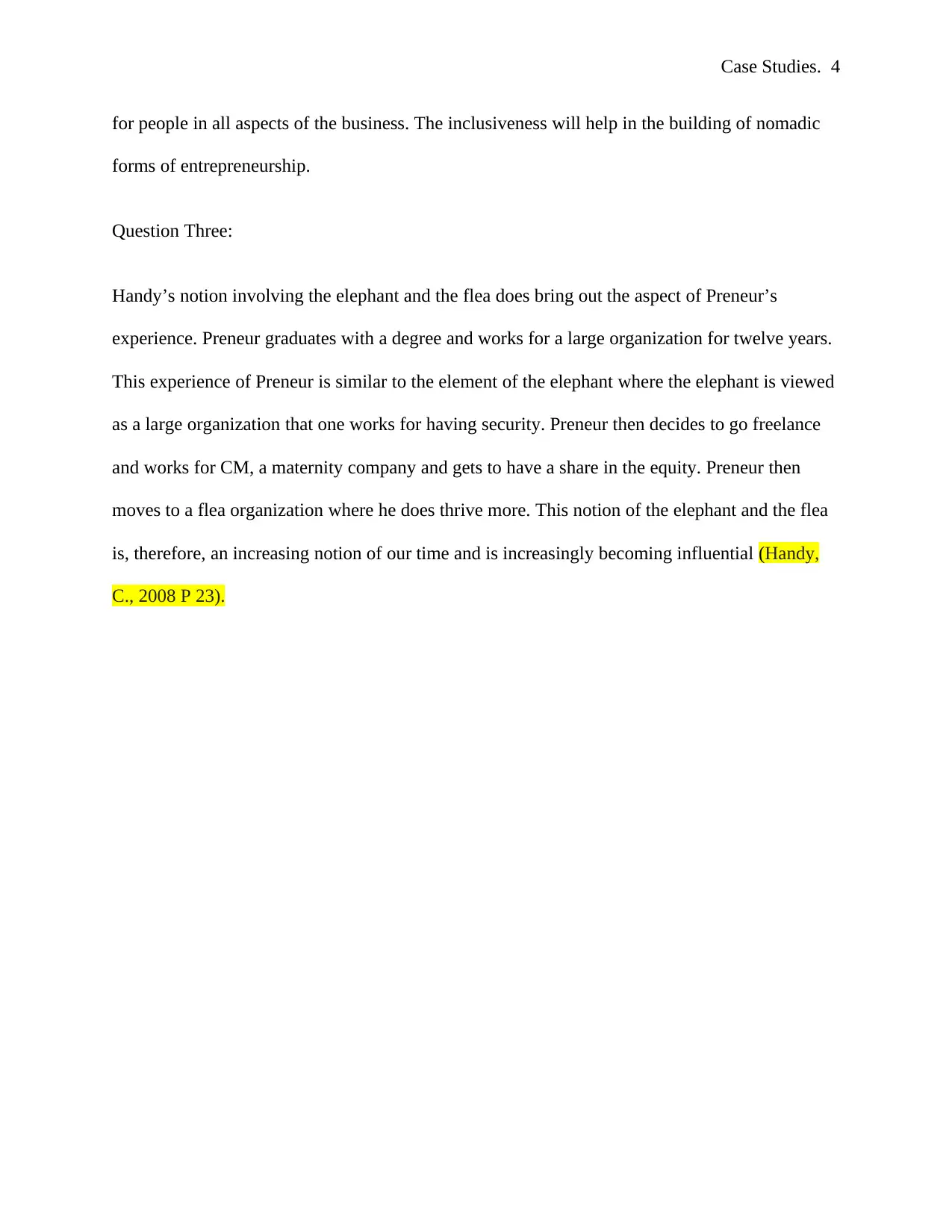
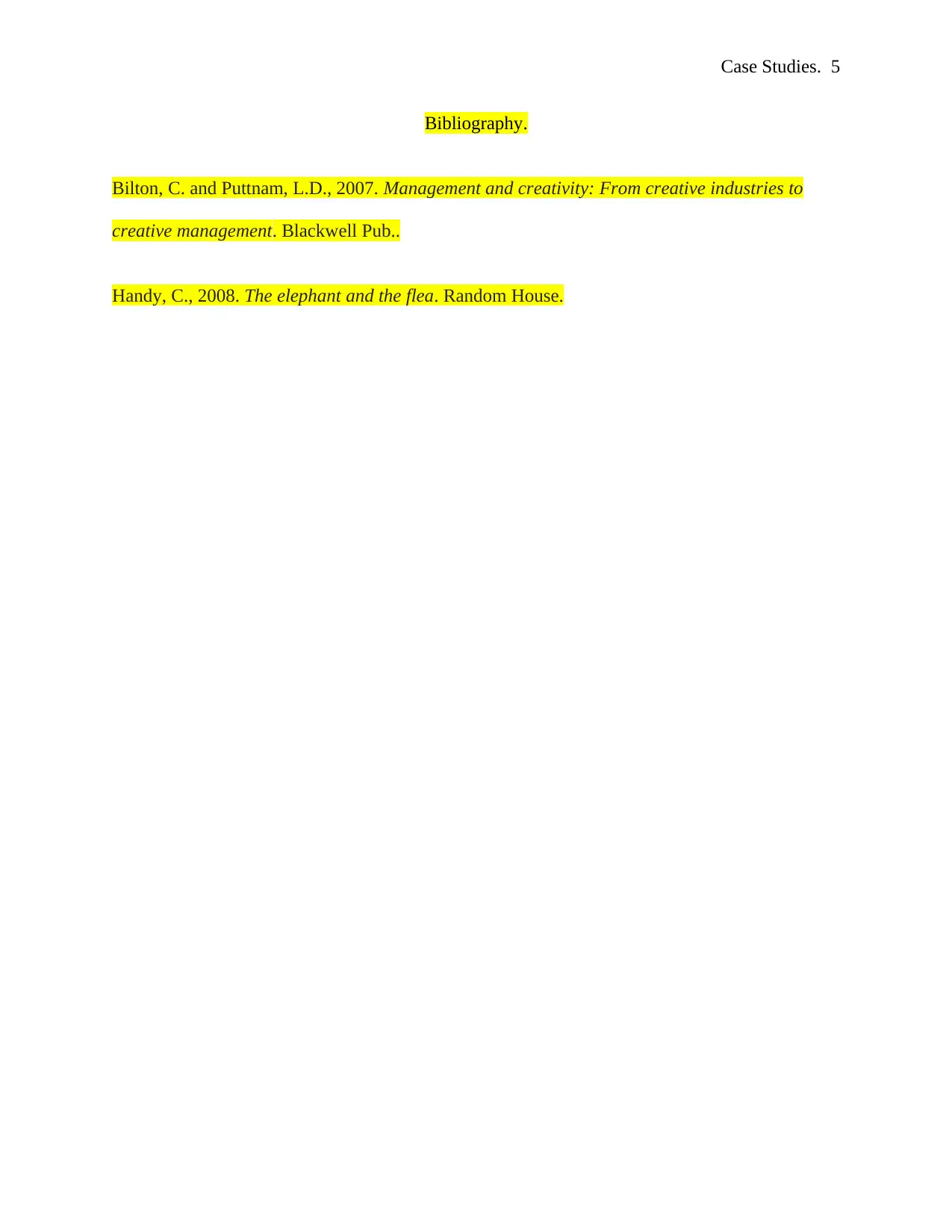



![[object Object]](/_next/static/media/star-bottom.7253800d.svg)